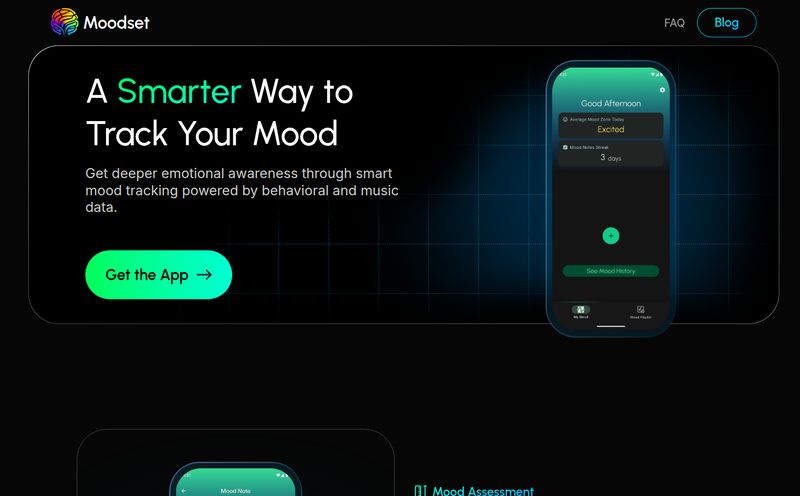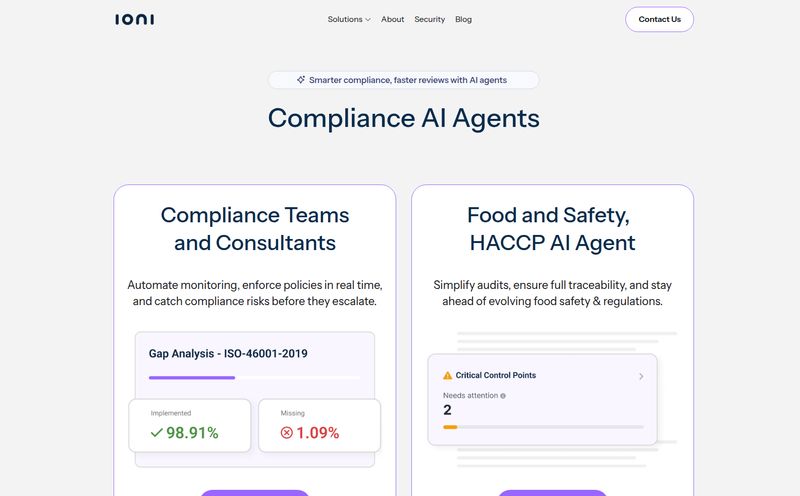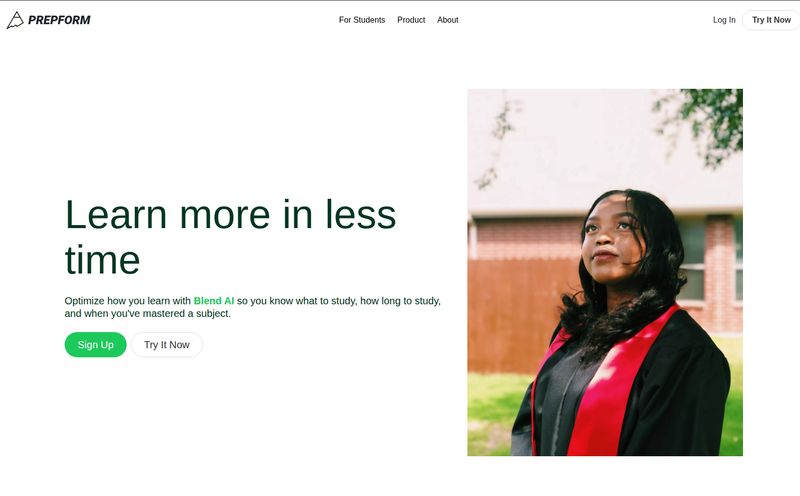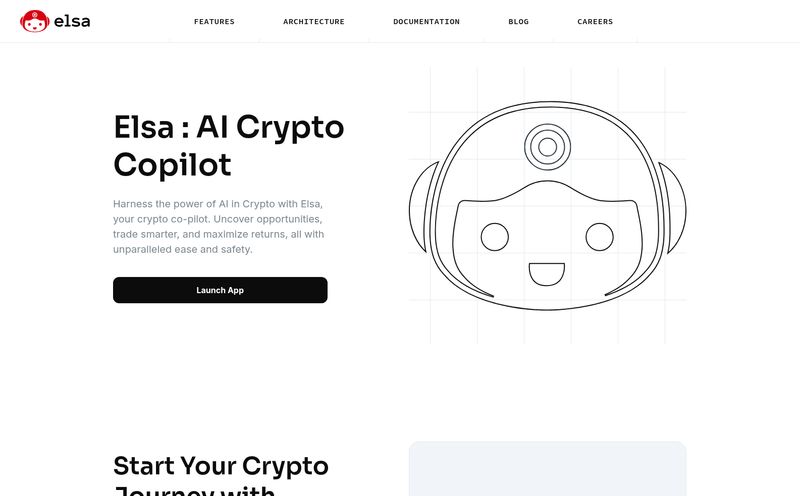Nobody gets into medicine because they have a burning passion for data entry. Yet, here we are. Drowning in EHR tasks, spending our evenings and weekends doing what I affectionately call “pajama time charting.” It's the soul-crushing administrative bloat that has become the unfortunate backdrop to modern healthcare. We’ve all felt it. The click-fatigue, the endless forms, the feeling that you spend more time facing a screen than facing your patients.
For years, we’ve been promised tech solutions. Some have helped, many have just… added more steps. So when another AI tool pops up claiming to be the cure for documentation headaches, a healthy dose of skepticism is understandable. But I've been keeping my eye on a platform called S10.AI, and I have to say, it’s making some pretty compelling arguments.

Visit S10.AI
So, What Exactly is S10.AI?
Think of S10.AI as a ghostwriter for your clinical brain. At its core, it’s an AI Medical Scribe that listens to your natural conversation with a patient—either in-person or via telehealth—and transforms it into a structured, precise clinical note. No more awkward typing during the visit or trying to recall details hours later. It just listens, and it writes.
It's designed to be this ambient force in the exam room, quietly capturing the important details so you can focus on, you know, the actual human being in front of you. The goal is simple but ambitious: to virtually eliminate the administrative burden of clinical documentation and fight the rising tide of physician burnout. A noble cause, if you ask me.
The Features That Actually Move the Needle
A lot of platforms boast a long list of features, but I only care about the ones that make a tangible difference in the day-to-day grind. Here's what stands out with S10.AI.
More Than Just a Scribe: The AI Assistant
This isn't just a simple dictation tool that turns speech into a wall of text. The platform's intelligence is in how it structures that text. It can pull out the subjective, objective, assessment, and plan (SOAP) components, generate summaries, and even create a chart from the conversation. It's built to understand the flow and context of a clinical encounter, which is a far cry from the Siri-like dictation tools of the past.
The Holy Grail: Real EHR Integration
Okay, this is the big one. Any tool that doesn't play nice with your existing Electronic Health Record system is dead on arrival. We all remember the great EHR implementation sagas of the 2010s; nobody wants a new walled garden of software. S10.AI claims to integrate with any EHR. That’s a bold claim. In my experience, “seamless integration” can often mean “works after three weeks of IT support and a few pulled hairs.” But the fact that they've built their platform with this as a cornerstone is a massive point in their favor. If it works as advertised, it means the notes can be pushed directly where they need to go, dramatically cutting down on copy-paste time.
Customization is King
Cardiology notes look different from pediatric notes. A private practice has different needs than a massive hospital network. S10.AI seems to get this. They emphasize that you can create customizable note templates. This is crucial. A rigid, one-size-fits-all format would just trade one type of administrative headache for another. The ability to tailor the output to your specific workflow and preferences is what separates a genuinely useful tool from a gimmick.
The Good, The Bad, and The AI-Powered Reality
No tool is perfect. Let’s talk about the real-world impact—both the wins and the potential pitfalls. The biggest win is obvious: time. Giving clinicians back hours in their day is priceless. A study I often quote from the Annals of Internal Medicine found that for every hour of direct patient care, physicians spend nearly two on EHR and desk work. Its a staggering statistic. A tool like S10.AI directly attacks that 2-to-1 ratio.
Beyond time savings, there's the improved accuracy. Let's be honest, notes written hours after a visit are based on memory, which is fallible. Real-time documentation captures a more accurate record, which is better for patient care, billing, and liability.
Now, for the reality check. The system is still reliant on AI, and AI is not infallible. You must review the generated notes. Think of the AI as a hyper-efficient medical student writing the first draft—it’s probably a great draft, but it needs your attending physician's sign-off. This isn't a hands-off, fully autonomous system. It's a co-pilot, and you're still the captain. There’s also going to be a bit of a learning curve to get the templates set up just right, and like any cloud-based service, it’s dependent on a stable internet connection.
| The Wins | The Watch-Outs |
|---|---|
| Huge reduction in administrative time, better focus on patients, seamless EHR integration, higher note accuracy, and it's all HIPAA compliant. | Still requires human review and sign-off, might take some time to set up perfectly, and needs a reliable internet connection to work. |
Alright, How Much Does This Magic Cost?
And now for the million-dollar question. I scoured their site, but as is common with enterprise-grade B2B software, there’s no public pricing page. This usually means one thing: it’s not a one-price-fits-all product. The cost will likely depend on the size of your practice, the number of users, and the level of integration required. Your best bet is to reach out to them directly for a demo and a custom quote. Don’t be shy; getting a demo is the best way to see if it’ll actually fit your workflow anyway.
Who Should Be Giving S10.AI a Shot?
Honestly? Any clinician or administrator who feels like they’re losing the war against paperwork. This could be a solo practitioner looking to reclaim their evenings, a mid-sized clinic trying to improve efficiency and reduce overhead, or a large hospital system focused on combating physician burnout at scale. Given its promise to work across specialties and integrate with existing systems, its appeal is pretty broad. If the pain point of documentation is high, S10.AI is worth putting on your radar.
My Final Take: Is S10.AI Worth the Hype?
After looking at what S10.AI brings to the table, I'm cautiously optimistic. This isn't just another piece of tech for tech's sake. It's a tool aimed squarely at solving one of the most pervasive and morale-destroying problems in healthcare today. The combination of an intelligent scribe, an EHR-agnostic approach, and customization shows they understand the real-world challenges.
It’s not a magic wand that will instantly solve burnout. But it is a powerful force multiplier. It automates the most tedious part of the job, allowing smart, dedicated professionals to do what they do best: care for people. And in my book, any technology that helps us be more human is a step in the right direction.
Frequently Asked Questions about S10.AI
- Is S10.AI HIPAA compliant?
- Yes, the platform is designed with HIPAA compliance at its core to ensure patient privacy and data security are maintained. This is a non-negotiable for any tool in the healthcare space.
- Does S10.AI work with my specific EHR?
- S10.AI claims to integrate with any Electronic Health Record system. While you'd want to confirm this for your specific setup during a demo, it's designed to be universally compatible.
- How accurate are the AI-generated notes?
- The accuracy is designed to be very high, but it's not perfect. It's intended to produce a near-final draft. The clinician is always expected to give the note a final review and sign-off before it's added to the patient's chart.
- Can I customize the format of the clinical notes?
- Absolutely. S10.AI offers customizable templates so you can tailor the note structure to your specialty, your practice's standards, and your personal preferences.
- What's the difference between the AI Medical Scribe and the AI Patient Care Agent?
- The AI Medical Scribe is the core feature that transcribes and structures notes from a doctor-patient conversation. The AI Patient Care Agent is a broader solution, likely involving more automated patient interactions or administrative tasks, though the primary focus is on the scribe functionality.
- Is there a free trial for S10.AI?
- The website doesn't mention a free trial. Typically, for software of this nature, the sales process involves a personalized demo rather than a self-serve trial. It's best to contact their team directly to discuss options.
Reference and Sources
- Allocation of Physician Time in Ambulatory Practice: A Time and Motion Study in 4 Specialties. (2017). Annals of Internal Medicine.



